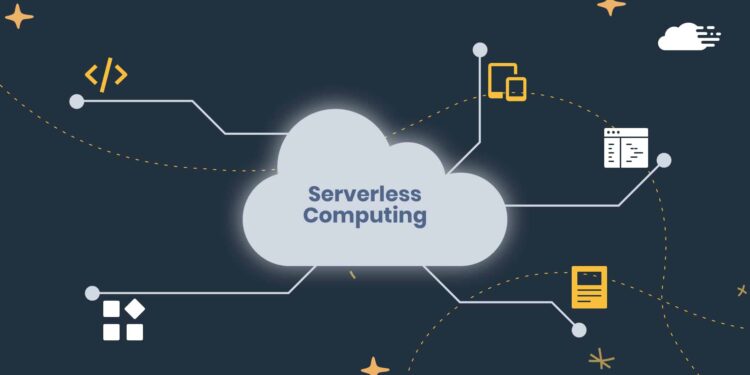The growth of serverless computing is increasing with every passing day. A survey by O’Reilly found 40% of organizations used serverless architecture in 2019. Additionally, DataDog found 50% of AWS users adopt the serverless AWS Lambda for its advantages.
But what is serverless computing? What does serverless mean?
Alpacked team saw people have a lot of misconceptions about serverless technology. So, we decided to do our bit and present the top things to know about serverless architectures. Let’s start with the most vital aspect to paint a clear picture of serverless technologies.
Serverless Is Not Really Serverless
Many people think serverless means the elimination of servers. However, this is a misconception, and serverless computing does involve physical servers.
So, why is it called serverless?
Serverless meaning is not used in the literal sense in serverless computing. Serverless architectures are serverless as the users don’t need to worry about the servers. All tasks of managing and provisioning servers are the responsibilities of the serverless cloud or technology providers.
As a result, businesses can focus on their work and less on server management duties.
Alt- Serverless architecture example
Desc- Here’s how a serverless architecture works
Serverless Workflows Are Event-Triggered
Businesses mostly use serverless architectures for event-driven functions. They don’t need to maintain or pay for a server unless they are using it. As a result, serverless computing is mostly used for seasonal spikes or additional workflow outside of regular operations.
For example, an eCommerce portal may use serverless computing for the Holiday season to handle the additional demand. Or, an app may use a serverless architecture to process documents before sending them to the end-user.
Serverless Technologies Use Pay-As-You-Use Models
Businesses generally need to pay monthly for servers unless they own the infrastructure. They have to keep paying even if they don’t use the server fully or all the time. Naturally, this adds to business expenses without any actual productivity.
Serverless computing solves the cost challenge and makes things more affordable for businesses. They need to pay only for the space or computing resources used. There is no need to keep paying fixed monthly subscriptions when you don’t use the server.
Serverless uses a pricing model like electricity providers that charge you only for the units of power consumed. So, a business is able to cut down its IT budget and costs.
Serverless Allows Businesses to Focus on Quality
Serverless architectures don’t need businesses to fiddle with infrastructure. You don’t need to worry about provisioning, security, or managing patches. Instead, businesses can focus on developing quality products without having to handle server duties.
Developers can also save their time and effort to create better codes under serverless computing. They don’t even have to handle any provisioning or tasks involving the OS. They can just concentrate on-
- Creating quality codes
- Boosting efficiency and productivity
- Addressing market changes quickly
Serverless Makes Sense for Varied Industries
The tech industry was the first to adopt serverless computing. Businesses that relied on the cloud saw the advantages of going serverless. However, that was just the beginning!
At Alpacked, we have several clients that prefer serverless for their businesses. But the interesting thing is, not all of them are tech or cloud-native companies. Many are in retail, manufacturing, education, and other industries.
Why are they shifting to serverless?
Let’s take the example of the education industry. Schools or colleges experience a spike in workflow and processes during admissions. In comparison, the rest of the year is lean. So, using a serverless architecture to handle admission workflows saves money and boosts productivity.
All industries can benefit from serverless computing when used for the right purposes.
Serverless for Seamless Scaling
A serverless environment is much easier to scale up or down compared to traditional infrastructure. You can use all the storage and resources you need on-demand basis without the need to maintain or pay for infrastructure. Your systems can stay idle for the rest of the time without adding any expenses or costs.
Additionally, your provider will take care of any configuration or changes needed. You don’t have to worry about anything.
Choose Vendors Wisely
Alt- Serverless computing vendors
Desc- A look at serverless vendors
Cloud providers are the main agencies offering serverless architectures. The most popular among them is AWS Lambda started in 2014. You also have other players in the segment like Microsoft Azure Functions, IBM Cloud Functions, and Google Cloud Functions. All the providers come with their unique pros and cons.
Additionally, you may have to use tools from the provider for creating serverless codes. As a result, evaluate your options and choose a vendor that matches your needs. You may need to talk with your developers and find out what they think before selecting a vendor.
Serverless May Need a Cultural Shift
Serverless computing is unleashing a cultural change by changing the way of doing things. As a result, you should be ready to adapt and tune yourself to the new trends and best practices. Businesses may need to work with an expert to understand the nuances of going serverless. Our team at Alpacked is ready to help you out when you need!











